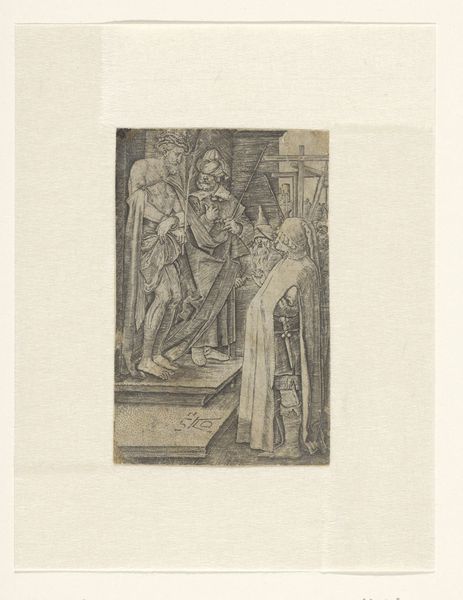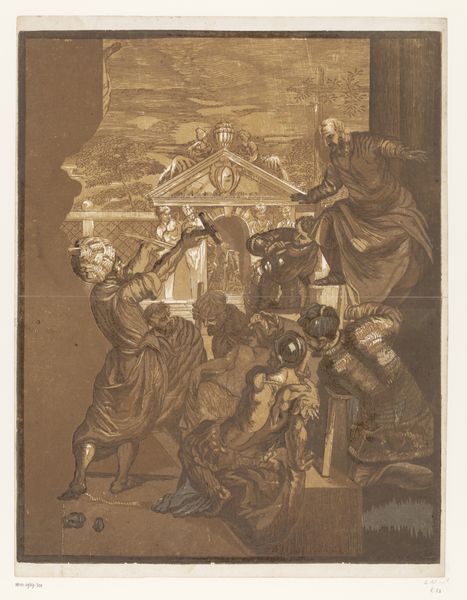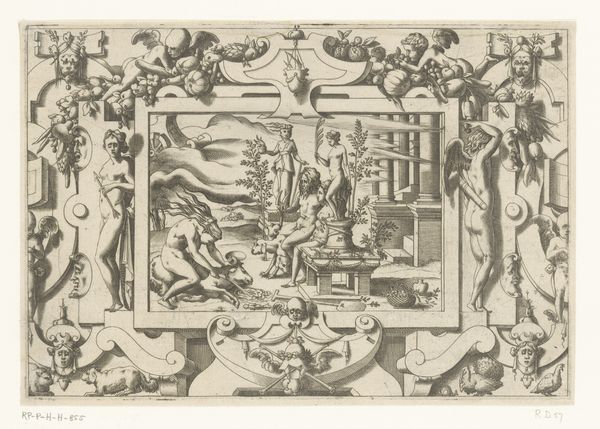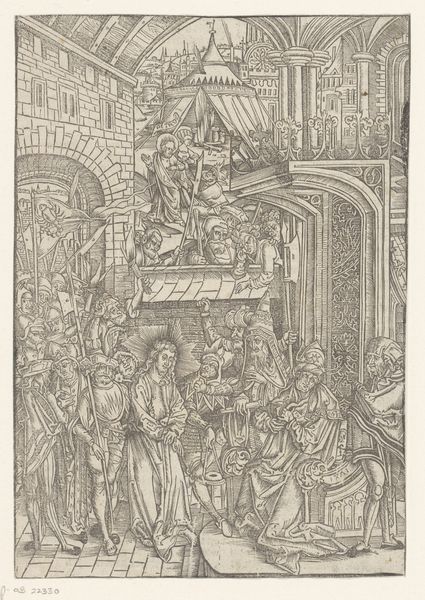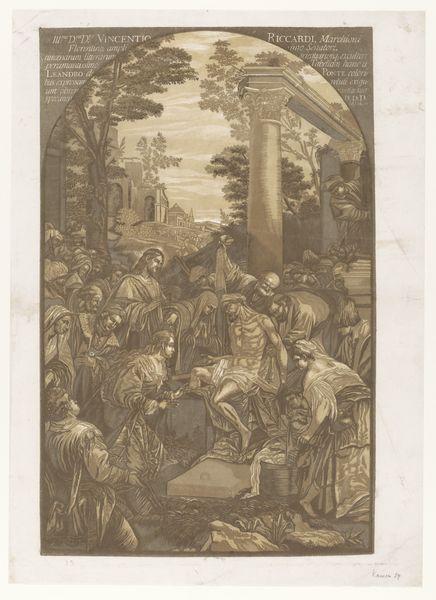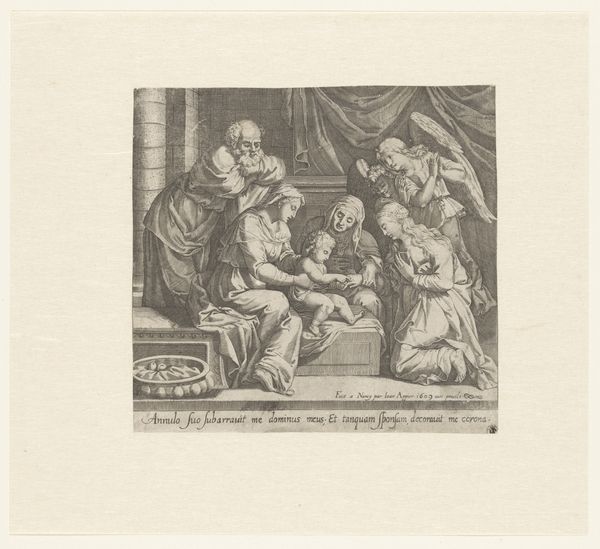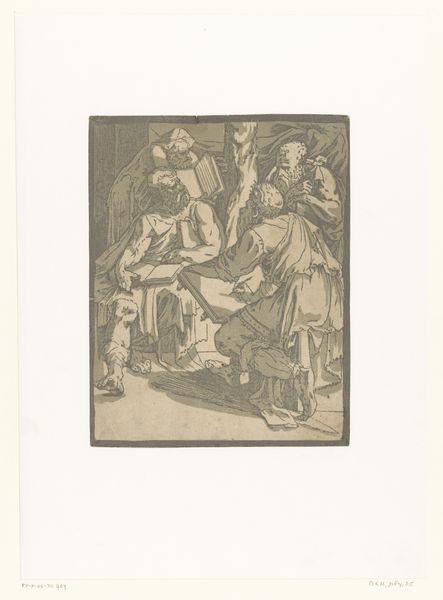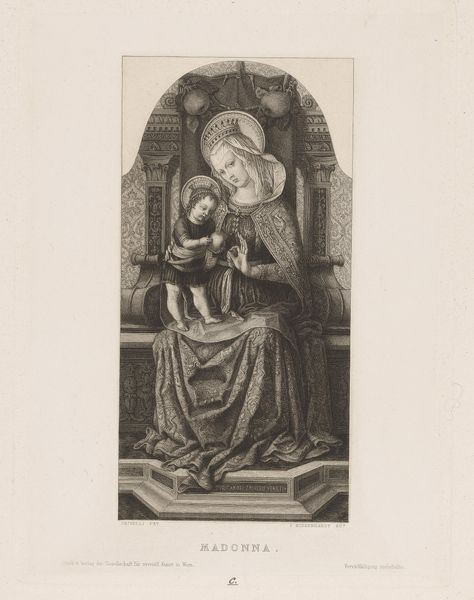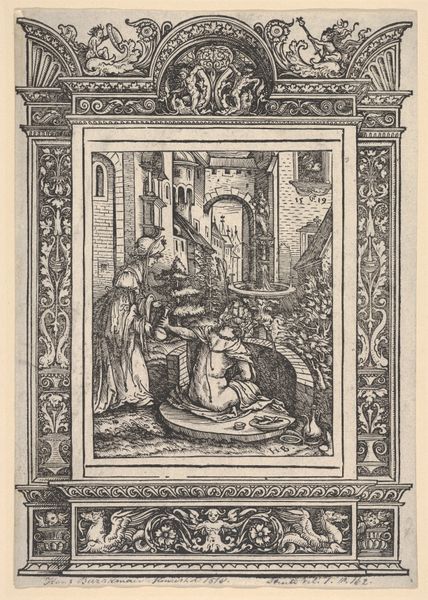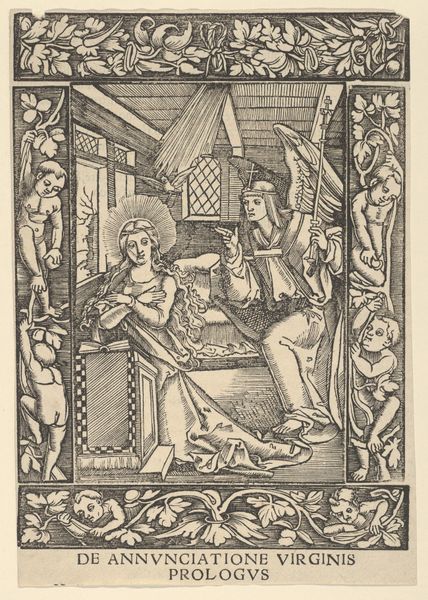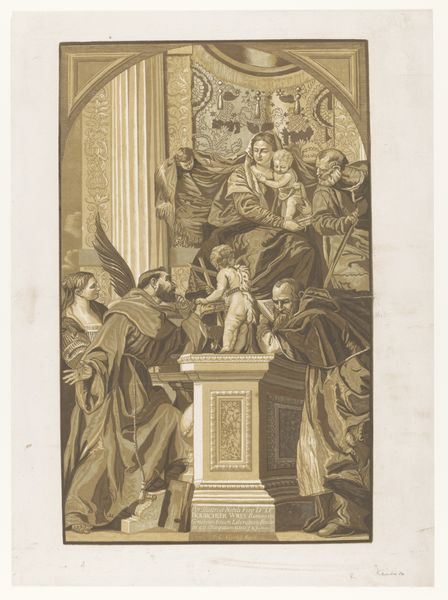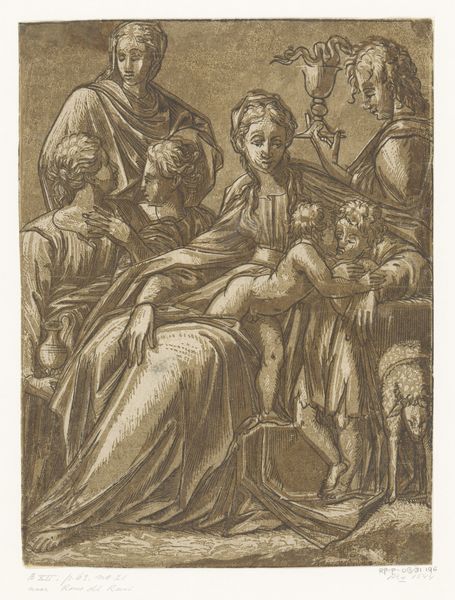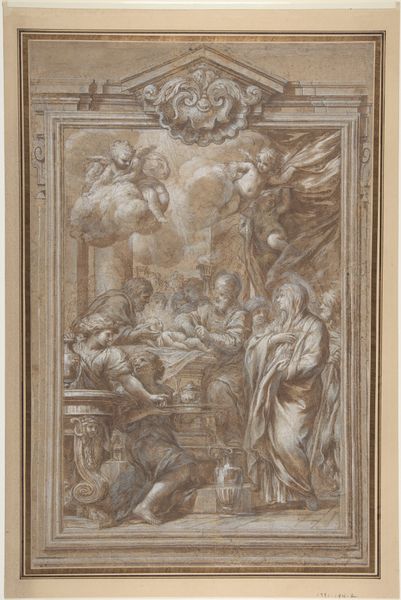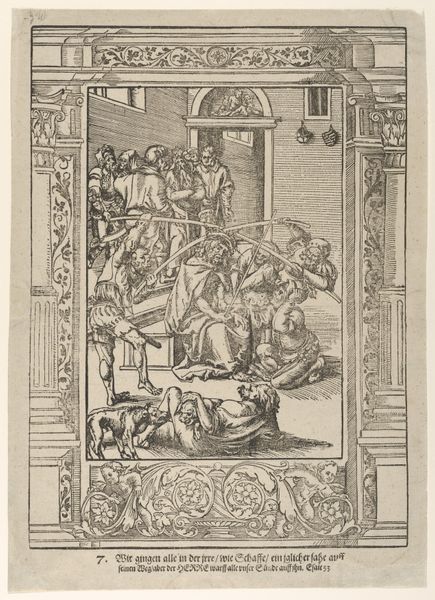
tempera, painting
#
portrait
#
narrative-art
#
tempera
#
painting
#
handmade artwork painting
#
history-painting
#
northern-renaissance
#
portrait art
Dimensions: height 28 cm, width 19.5 cm
Copyright: Rijks Museum: Open Domain
Curator: Here we have an intriguing panel painting from around 1525-1530, titled "Ahasuerus Listening to the Chronicles of His Kingdom". It’s unsigned, currently attributed to an anonymous artist. Editor: My immediate reaction is that the painting feels rather staged. Like a diorama, compartmentalized but visually engaging. I am interested in the color palette – there’s a noticeable coolness despite the gilded accents. Curator: Precisely. The painting offers a window into the early 16th-century courts. The depiction aligns with the northern Renaissance interest in domestic detail, as you can observe by looking closely at the textures of the fabrics and even the carvings on the desk. Tempera as a medium allows for precisely those details. It tells the story from the Book of Esther. Editor: Looking at it from the angle of materiality, the tempera is essential to notice; its handling suggests the training of workshops that produce items for the elites. Curator: The way this story has been made accessible for a contemporary audience by framing the biblical Ahasuerus within recognizable courtly interior, allowing the patron a point of connection, reflects a clever socio-political positioning by the artist. Note the guard signaling the story to the king. Editor: And I appreciate how this small, somewhat claustrophobic interior overflows with activity; there’s a servant in the courtyard, an unassuming puppy under the desk—every corner given material consideration. That interplay between foreground and background adds a unique tension, reflecting the very real concerns of material distribution, power and class present in the early modern workshops from whence it came. Curator: It’s a piece that offers so many avenues of exploration—from the visual storytelling to its place in courtly culture. A real testament to the layered nature of historical art. Editor: Absolutely. The interplay between craftsmanship and narrative power is truly striking, reflecting tangible resources and invisible influences in the socio-cultural dynamics present when this was commissioned and constructed.
Comments
No comments
Be the first to comment and join the conversation on the ultimate creative platform.
